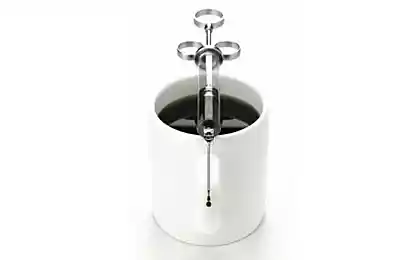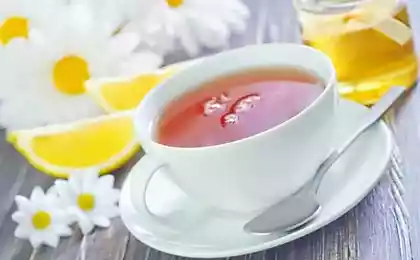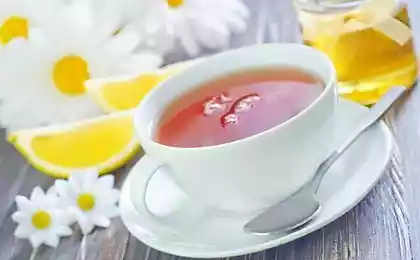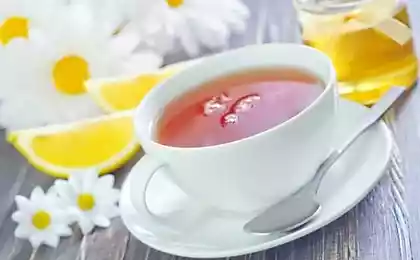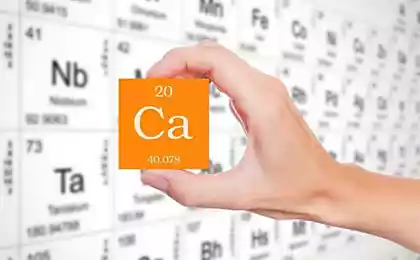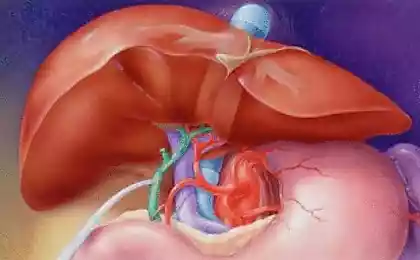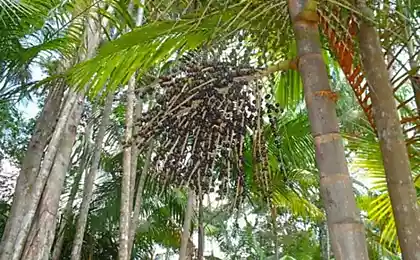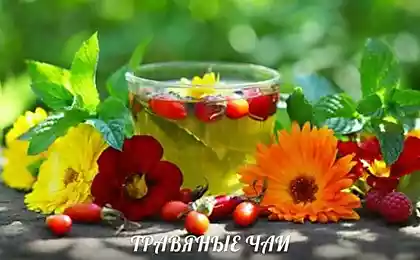444
Tea with foil: to Drink or to Survive
Chinese folk wisdom says: "Prestavi tea is like poison".
And in Japan, saying: "Yesterday's tea is worse than a snake bite".
Tea (or, in other words, extract of tea leaves) chemical composition – a complex mixture consisting of:
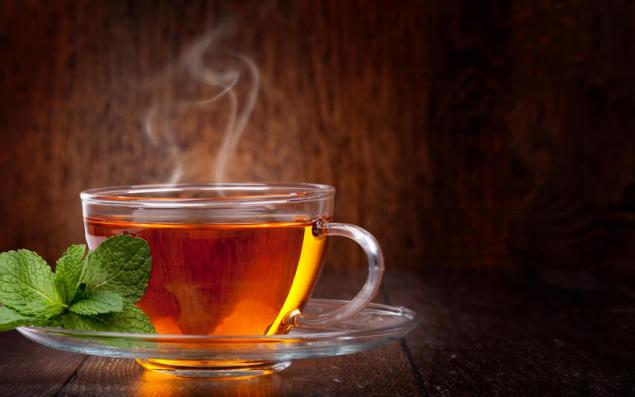
Many of them tend to osmolytes, that is, to form a mixture of polycondensation and oxidation products under the action of oxidizing agents, particularly oxygen.
On the surface of many liquids (except for acids, alkalis and chemically pure water) as a result of contact with oxygen forms a thin oxide film. The more in a solution of mineral and organic compounds, especially proteins, the thicker the film.
And the tea: of the above organic compounds, abundantly present in tea (especially based on the low molecular weight catechin polyphenols, proteins and purine bases), coming into contact with oxygen oxidize, polimerizuet, form complex compounds, partially drop down into the sediment, and partly forming a film on the surface.
Studies have shown that the caffeine in the finished tea is present not only in free form but in combination with tannin in the form of tanata caffeine. This compound is primarily responsible for the formation of a "film" on the surface of the tea extract to form more complicated complexes with proteins and mineral salts.
It is established that the maximum time of transition in extract caffeine from tea leaves is 5 mins for black tea and 6 minutes for green.
The composition resulting from the oxidative-fermentative processes film on the surface of the tea extract is very complicated. There are:
When injected into the human body a layer of insoluble film of protein-tannins-purine-iron-calcium-magnesium complex – covers the mucous membrane of the stomach and intestines, prevents absorption of nutrients and irritates the intestinal tract. While slowing down the peristalsis of the intestine, the food mass is accumulated in the cavity of the gastrointestinal tract, under this insoluble film increases considerably the bacterial activity, the processes of fermentation and putrefaction, is the absorption of the mucous membrane are formed of toxic substances, develop erosive processes.
Of course, in single dose "constant" tea biggest problems with the gastrointestinal tract is not expected, however, when regular, repeated several times a day, the use and possible gastritis and duodenitis and erosion, and ulcer disease, and in the most severe cases, even tumors of a malignant nature.
But the dangers of taking nesvertawateisa of tea lies not only in the effect on the gastrointestinal tract complex compounds based on catechin, purines and proteins – insoluble film.
Even more serious consequences, particularly for the nervous and cardiovascular systems, can cause one of the derivatives of purine, turning into the extract of the tea when it is standing more than 10 minutes – guanine.
Nitrogenous base passes the tea extract through 8-15 minutes after brewing, or as a result of boiling.
Guanine – a purine base contained along with other purines (caffeine, theophylline) in the tea leaves. In itself, this compound is not dangerous, it is part of nucleic acids. The danger is the product of its oxidation – toxic guanidine and / .
The guanidine and / – n-cholinomimetic, toxic substance, concentrated solutions which, upon contact with skin, cause alkali burns, the nervous system has a stun effect. Mainly the character of its action on the body like histamine.
Pharmacological action of guanidine is to stimulate the respiratory center (analeptic effect) and to increase blood pressure as a result of interaction with n-cholinergic receptors of chromaffin tissue of the adrenal glands (increased adrenaline) and sympathetic ganglia (increased sympathetic impulses to heart and blood vessels, increased heart rate).
At high concentrations of guanidine possible manifestations in the form of anxiety, irritability, tremor of extremities, seizures, psychomotor agitation, rambling flow of thought and speech, dizziness, paresthesia in the mouth and extremities, hypertension, tachycardia, arrhythmia, suppression of bone marrow function, a toxic liver damage, hypoglycemia, reduce the concentration of calcium in the blood.
The literature describes a case of mass poisoning in 2006, the guanidine salts of 162 people (three cases were fatal) in the municipal formation of Verkhnyaya Salda, Sverdlovsk region (Russia), which led to the development of toxic hepatitis in survivors.
In addition, not superfluous will remind that contained in tea purine bases are directly related to metabolic processes, the violation of which is manifested by a delay in the body of uric acid and deposition of its salts in the tissues. In particular, a consequence of metabolic purine compounds is almost always very unpleasant and very painful disease gout.
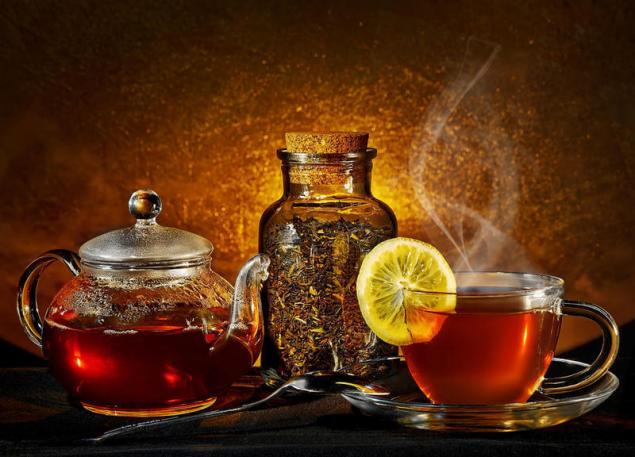
So let's be mindful of the possible negative consequences of receiving "constant" for more than 10 minutes after brewing the tea.
Universal indicator will provide education on this film. This tea is harmful to the body, and pour (not the drink!) it is necessary, if, as he said in his miniature M. Zhvanetsky "are You interested in the result...".published
P. S. And remember, only by changing their consumption — together we change the world! ©
Source: www.pharmacognosy.com.ua/index.php/zagadki-rastenij/chaj-s-plenkoj-vypit-ili-vyzhit
And in Japan, saying: "Yesterday's tea is worse than a snake bite".
Tea (or, in other words, extract of tea leaves) chemical composition – a complex mixture consisting of:

- catechins and their dimers (theaflavins) and polymers (thearubigins);
- proanthocyanidins;
- oxidized low molecular weight condensed tannins;
- purine derivatives: alkaloids caffeine, theophylline, theobromine, purine base guanine;
- terpene and aromatic alcohols (cinnamic alcohol, benzyl alcohol, phenylethyl alcohol, geraniol, citronellol, linalool, etc.);
- mineral salts;
- proteins;
- amino acids asparagine, glutamine, theanine, serine, alanine, lysine, arginine, valine, leucine and phenylalanine;
- aldehydes (acetaldehyde, acetone, isobutyric, Caproic izovalerianovoy and aldehydes);
- free acids (acetic, butyric, valeric, Caproic, Caprylic, etc.);
- vitamins.
Many of them tend to osmolytes, that is, to form a mixture of polycondensation and oxidation products under the action of oxidizing agents, particularly oxygen.
On the surface of many liquids (except for acids, alkalis and chemically pure water) as a result of contact with oxygen forms a thin oxide film. The more in a solution of mineral and organic compounds, especially proteins, the thicker the film.
And the tea: of the above organic compounds, abundantly present in tea (especially based on the low molecular weight catechin polyphenols, proteins and purine bases), coming into contact with oxygen oxidize, polimerizuet, form complex compounds, partially drop down into the sediment, and partly forming a film on the surface.
Studies have shown that the caffeine in the finished tea is present not only in free form but in combination with tannin in the form of tanata caffeine. This compound is primarily responsible for the formation of a "film" on the surface of the tea extract to form more complicated complexes with proteins and mineral salts.
It is established that the maximum time of transition in extract caffeine from tea leaves is 5 mins for black tea and 6 minutes for green.
The composition resulting from the oxidative-fermentative processes film on the surface of the tea extract is very complicated. There are:
- oxidized low molecular weight condensed tannins are derivatives of catechins,
- protein molecules
- nitrogenous bases (caffeine, theophylline, guanine),
- iron,
- calcium,
- magnesium.
When injected into the human body a layer of insoluble film of protein-tannins-purine-iron-calcium-magnesium complex – covers the mucous membrane of the stomach and intestines, prevents absorption of nutrients and irritates the intestinal tract. While slowing down the peristalsis of the intestine, the food mass is accumulated in the cavity of the gastrointestinal tract, under this insoluble film increases considerably the bacterial activity, the processes of fermentation and putrefaction, is the absorption of the mucous membrane are formed of toxic substances, develop erosive processes.
Of course, in single dose "constant" tea biggest problems with the gastrointestinal tract is not expected, however, when regular, repeated several times a day, the use and possible gastritis and duodenitis and erosion, and ulcer disease, and in the most severe cases, even tumors of a malignant nature.
But the dangers of taking nesvertawateisa of tea lies not only in the effect on the gastrointestinal tract complex compounds based on catechin, purines and proteins – insoluble film.
Even more serious consequences, particularly for the nervous and cardiovascular systems, can cause one of the derivatives of purine, turning into the extract of the tea when it is standing more than 10 minutes – guanine.
Nitrogenous base passes the tea extract through 8-15 minutes after brewing, or as a result of boiling.
Guanine – a purine base contained along with other purines (caffeine, theophylline) in the tea leaves. In itself, this compound is not dangerous, it is part of nucleic acids. The danger is the product of its oxidation – toxic guanidine and / .
The guanidine and / – n-cholinomimetic, toxic substance, concentrated solutions which, upon contact with skin, cause alkali burns, the nervous system has a stun effect. Mainly the character of its action on the body like histamine.
Pharmacological action of guanidine is to stimulate the respiratory center (analeptic effect) and to increase blood pressure as a result of interaction with n-cholinergic receptors of chromaffin tissue of the adrenal glands (increased adrenaline) and sympathetic ganglia (increased sympathetic impulses to heart and blood vessels, increased heart rate).
At high concentrations of guanidine possible manifestations in the form of anxiety, irritability, tremor of extremities, seizures, psychomotor agitation, rambling flow of thought and speech, dizziness, paresthesia in the mouth and extremities, hypertension, tachycardia, arrhythmia, suppression of bone marrow function, a toxic liver damage, hypoglycemia, reduce the concentration of calcium in the blood.
The literature describes a case of mass poisoning in 2006, the guanidine salts of 162 people (three cases were fatal) in the municipal formation of Verkhnyaya Salda, Sverdlovsk region (Russia), which led to the development of toxic hepatitis in survivors.
In addition, not superfluous will remind that contained in tea purine bases are directly related to metabolic processes, the violation of which is manifested by a delay in the body of uric acid and deposition of its salts in the tissues. In particular, a consequence of metabolic purine compounds is almost always very unpleasant and very painful disease gout.

So let's be mindful of the possible negative consequences of receiving "constant" for more than 10 minutes after brewing the tea.
Universal indicator will provide education on this film. This tea is harmful to the body, and pour (not the drink!) it is necessary, if, as he said in his miniature M. Zhvanetsky "are You interested in the result...".published
P. S. And remember, only by changing their consumption — together we change the world! ©
Source: www.pharmacognosy.com.ua/index.php/zagadki-rastenij/chaj-s-plenkoj-vypit-ili-vyzhit


